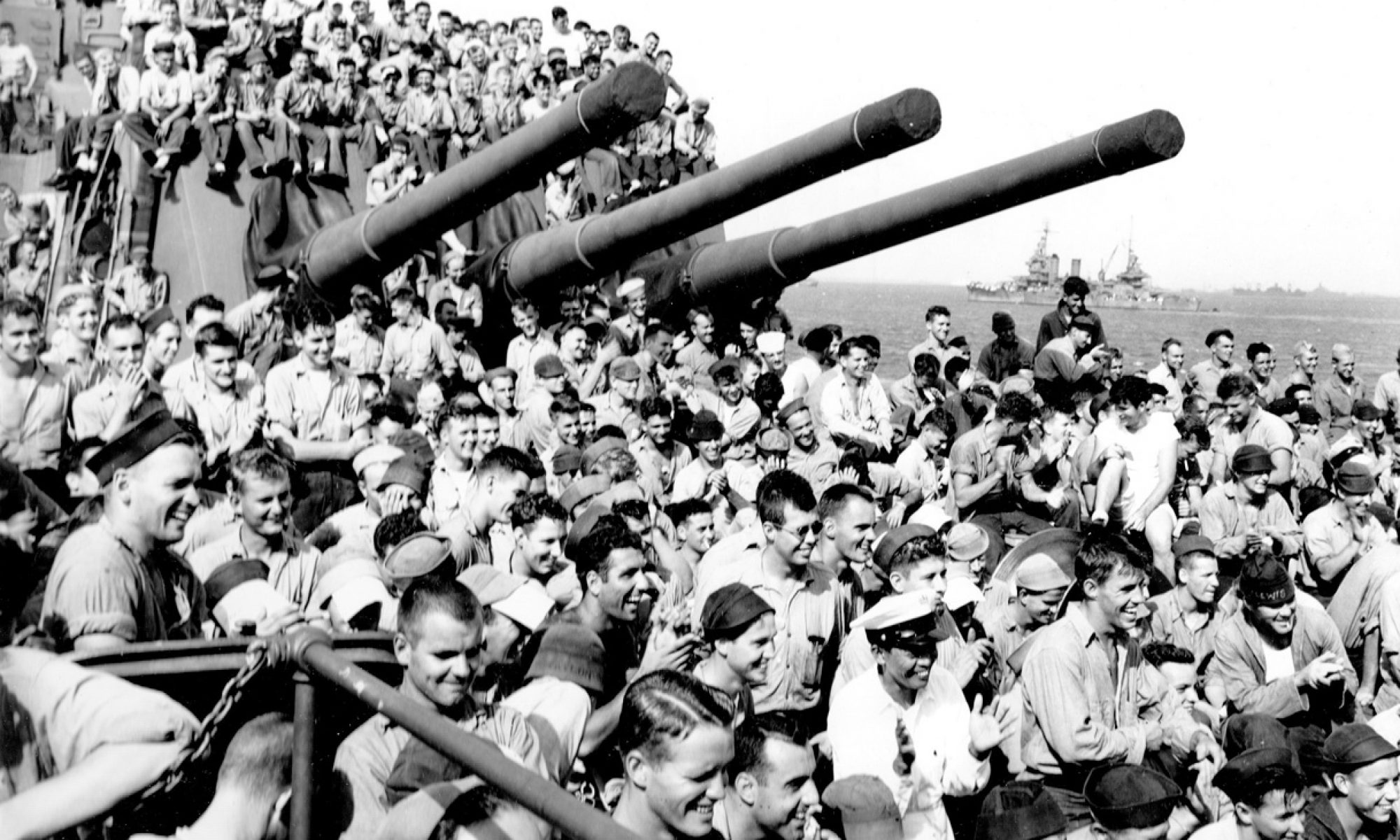Aug 2, 2014
The calendar is lining up in a weird way for me. As July ends and August begins, the story of the Boston and all the other ships of the Task Force shuffles headfirst into the forthcoming Armistice Day (Aug. 15). The ship participates in the shelling / bombardment of the Honshu industrial city of Hamamatsu on July 29. By the 30th, the weather is so bad that refueling has to be cancelled and the ships head south out of the typhoon and for the next several days, sort of “tread water.” By August 6, the ships have worked their way north, and are roughly back at the same latitude as they were on the 29th, but several degrees longitude to the west.
So why is this weird for me? In the last days of July, 1945, Marine Captain Norman C. Bayley arrives on the ship and replaces the Marine detachment Commanding Officer, Lt. Nesbitt. Norm’s arrival and Nesbitt’s departure do not appear on the ship’s decklogs. Over the following two and a half weeks, Norm, a veteran of Guadalcanal, is visited by two Admirals with “special assignments.” The first is to recon and report the destruction of both Hiroshima and then Nagasaki – arriving at both cities hours after the bombs drop – while thousands of badly wounded escaping citizens were streaming toward him. The second operation was about a week later, and involved him and a handful of Marines “demilitarizing” a kamaikaze training base just outside of Tokyo, prior to the Signing of the Surrender in Tokyo Bay.
The Boston decklogs show Norm coming aboard the day after he finished the Katsuura Wan “forage” – August 18. Norm and his service records are “invisible for three weeks – from late July through August 18.
The confluence of all this for me is that I’m doing research right now trying to flesh out two major story line details before I begin writing Norm’s biography. Just before the bomb drops on Hiroshima, Norm is visited by an Admiral, who convinces Norm to go to, despite the fact that “we don’t know what medical problems will develop, but we think at the least you will be sterile….” (this to a guy who suffered debilitating malaria contracted in Guadalcanal who spent three quarters of a year “recuperating” in an experimental Malaria Hospital run by the Marines in Klamath Falls, Oregon – before being assigned to the Boston – afloat thousands of miles away off Japan.
Norm agrees to go, and is assigned a Japanese interpreter, an English-speaking UCLA educated destroyer captain, who survived the sinking of his ship by Task Force carrier planes and was “fished out of the water a few days earlier.”
I have agreed to Norm and his family to write his biography, which I humbly say is an honor. His grandson, Patrick Masson is working with me on this project. So my challenge is this: without identifying both the Admiral and this Japanese ship captain who Norm calls “Takai,” the telling of this part of Norm’s story is hugely problematic.
So, as the calendar moves in synch with the impending A-bomb days, I am busy trying to find both the Admiral and the Captain. Research is a painstaking adventure, and there are MANY challenges to this adventure. I have a very strong Takai candidate, but cannot yet corroborate . . . I have two strong Admiral candidates – but all the threads are not yet in place for either of them.
